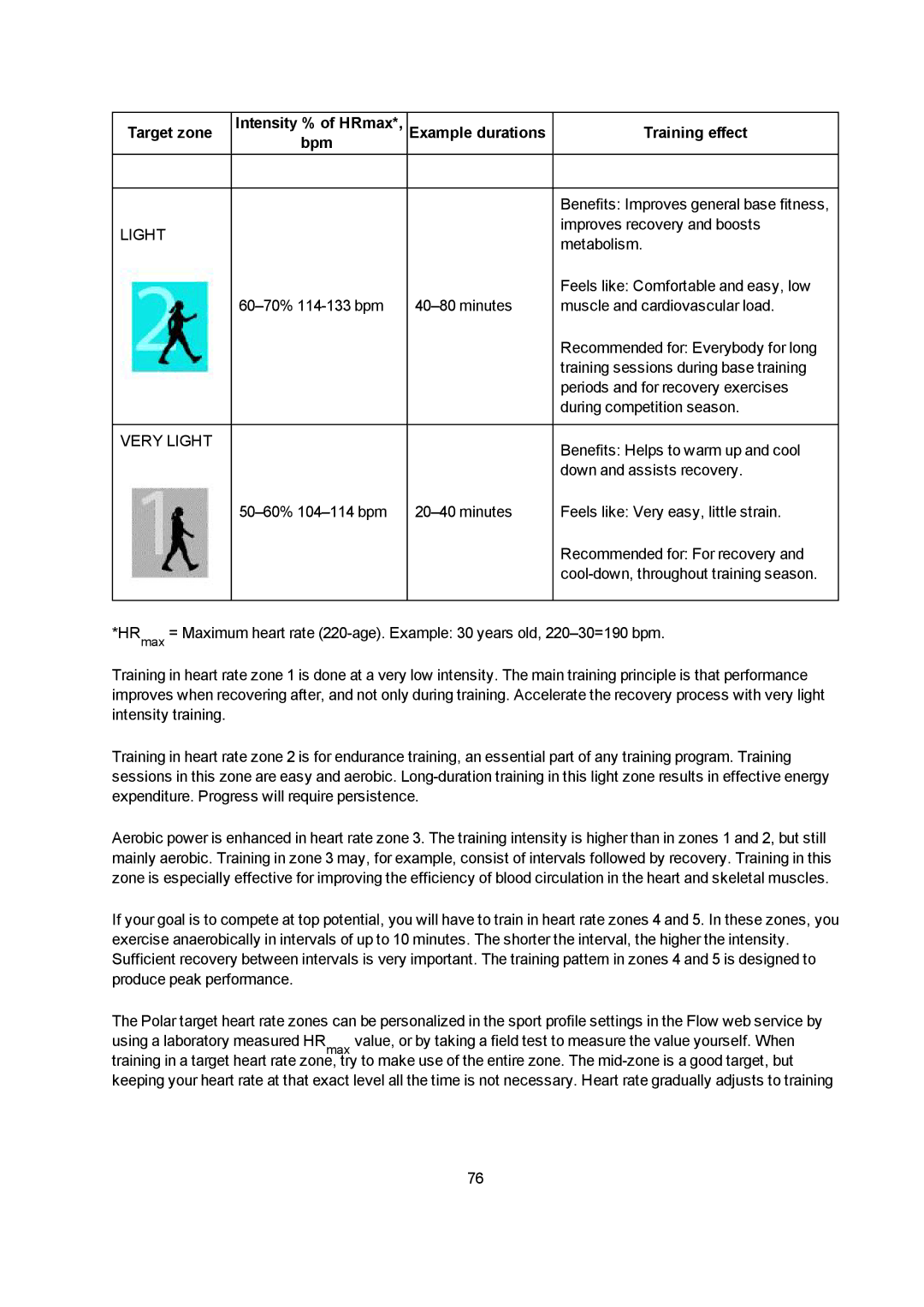
Target zone | Intensity % of HRmax*, | Example durations | Training effect |
| bpm |
|
|
|
|
|
|
|
|
| Benefits: Improves general base fitness, |
LIGHT |
|
| improves recovery and boosts |
|
| metabolism. | |
|
|
| |
|
|
| Feels like: Comfortable and easy, low |
| muscle and cardiovascular load. | ||
|
|
| Recommended for: Everybody for long |
|
|
| training sessions during base training |
|
|
| periods and for recovery exercises |
|
|
| during competition season. |
|
|
|
|
VERY LIGHT |
|
| Benefits: Helps to warm up and cool |
|
|
| |
|
|
| down and assists recovery. |
| Feels like: Very easy, little strain. | ||
|
|
| Recommended for: For recovery and |
|
|
| |
|
|
|
|
*HRmax = Maximum heart rate
Training in heart rate zone 1 is done at a very low intensity. The main training principle is that performance improves when recovering after, and not only during training. Accelerate the recovery process with very light intensity training.
Training in heart rate zone 2 is for endurance training, an essential part of any training program. Training sessions in this zone are easy and aerobic.
Aerobic power is enhanced in heart rate zone 3. The training intensity is higher than in zones 1 and 2, but still mainly aerobic. Training in zone 3 may, for example, consist of intervals followed by recovery. Training in this zone is especially effective for improving the efficiency of blood circulation in the heart and skeletal muscles.
If your goal is to compete at top potential, you will have to train in heart rate zones 4 and 5. In these zones, you exercise anaerobically in intervals of up to 10 minutes. The shorter the interval, the higher the intensity. Sufficient recovery between intervals is very important. The training pattern in zones 4 and 5 is designed to produce peak performance.
The Polar target heart rate zones can be personalized in the sport profile settings in the Flow web service by using a laboratory measured HRmax value, or by taking a field test to measure the value yourself. When training in a target heart rate zone, try to make use of the entire zone. The
76
